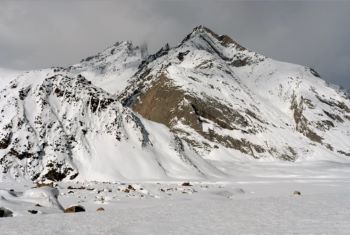International Year of Glaciers' Preservation 2025 - UNESCO and WMO launch global call for action to save Earth's vital ice
- January 22, 2025
- Posted by: Elaine Coles
- Category: Environmental, Global, Water Issues, Arctic & Antarctica, Europe

UNESCO and the World Meteorological Organization (WMO) yesterday officially launched the International Year of Glaciers’ Preservation at WMO headquarters, marking a crucial milestone in global efforts to protect glaciers that provide freshwater to over 2 billion people worldwide.
Numerous activities and events during the year will seek to raise global awareness about the critical role of glaciers in the climate system and hydrological cycle, while addressing the urgent challenges posed by accelerated glacier melting.
A critical moment for earth’s cryosphere
More than 275,000 glaciers worldwide cover approximately 700,000 km². Glaciers and ice sheets store about 70% of the global freshwater – however, the ice formations are rapidly retreating due to climate change.
WMO Secretary-General Celeste Saulo said:
“WMO recently confirmed that 2024 was the warmest year on record and has sounded repeated Red Alerts about the state of our climate, including the retreat of glaciers. In 2023, glaciers suffered the largest mass loss in the five decades of record-keeping. It was the second consecutive year in which all regions in the world with glaciers reported ice loss. Melting ice and glaciers threaten long-term water security for many millions of people. This international year must be a wake-up call to the world.”
Key initiatives and global impact
UNESCO and WMO are leading the International Year of Glaciers’ Preservation and will coordinate international efforts supported by over 75 international organizations and 35 countries.
The initiative focuses on several critical areas:
- Expanding global glacier monitoring systems to enhance data collection and analysis
- Developing early warning systems for glacier-related hazards
- Promoting sustainable water resource management in glacier-dependent regions
- Preserving cultural heritage and traditional knowledge related to glacial environments
- Engaging youth in glacier preservation efforts and climate action
- Melting creates short-term hazards, long term loss
Glaciers are often referred to as the “water towers of the world” because river basins with headwaters in the mountains supply freshwater to over half of humanity, including in the Himalaya-Hindu Kush and Tibetan Plateau region, known as the Third Pole.
The melting of glaciers, snow and ice translates into a short-term increase in landslides, avalanches, floods and droughts and a long-term threat to the security of water supplies for billions of people.
“Glaciers don’t care if we believe in science – they just melt in the heat for all to see,” said John Pomeroy, co-chair of the Advisory Board and a professor at the University of Saskatchewan. “Our “frozen water” has acted like millions of small dams, holding back water until the snow or glaciers melt – right when we needed it. More than 2 billion people rely on mountain snow and ice to replenish their rivers, lakes, and groundwater to support ecosystems, agriculture, energy, industry and drinking water. All of this is now at risk as global heating causes rapid glacier retreat, glacier lake outburst floods, snow droughts, loss of sea ice, rising sea levels, permafrost thaw and wildfires,” he said.
Carolina Adler of the Mountain Research Initiative is the other co-chair.
According to the Intergovernmental Panel on Climate Change, glaciers are projected to continue to decline in almost all regions of the world throughout the 21st century.
As mountain glaciers retreat, they are also altering water availability and quality downstream, with implications for aquatic ecosystems and many sectors such as agriculture and hydropower.
Join forces for Glaciers’ preservation
The International Year of Glaciers’ Preservation 2025 emphasizes the urgent need for immediate, ambitious action to reduce greenhouse gas emissions to stabilize the climate and implement effective adaptation strategies.
Governments, scientific institutions, private sector organizations, and civil society are invited to join the global effort and work together to preserve the vital resources through collaborative action and increased awareness.
For more information about the International Year of Glaciers’ Preservation and how to participate in its initiatives, visit www.un-glaciers.org
